#tarotthothmagickqabalahelitarotstrickingly.com
Above all things, know yourself!

Thoth- 5 of Wands-Strife
#5. I recognize the manifestation of undeviating justice in all the circumstances of my life.
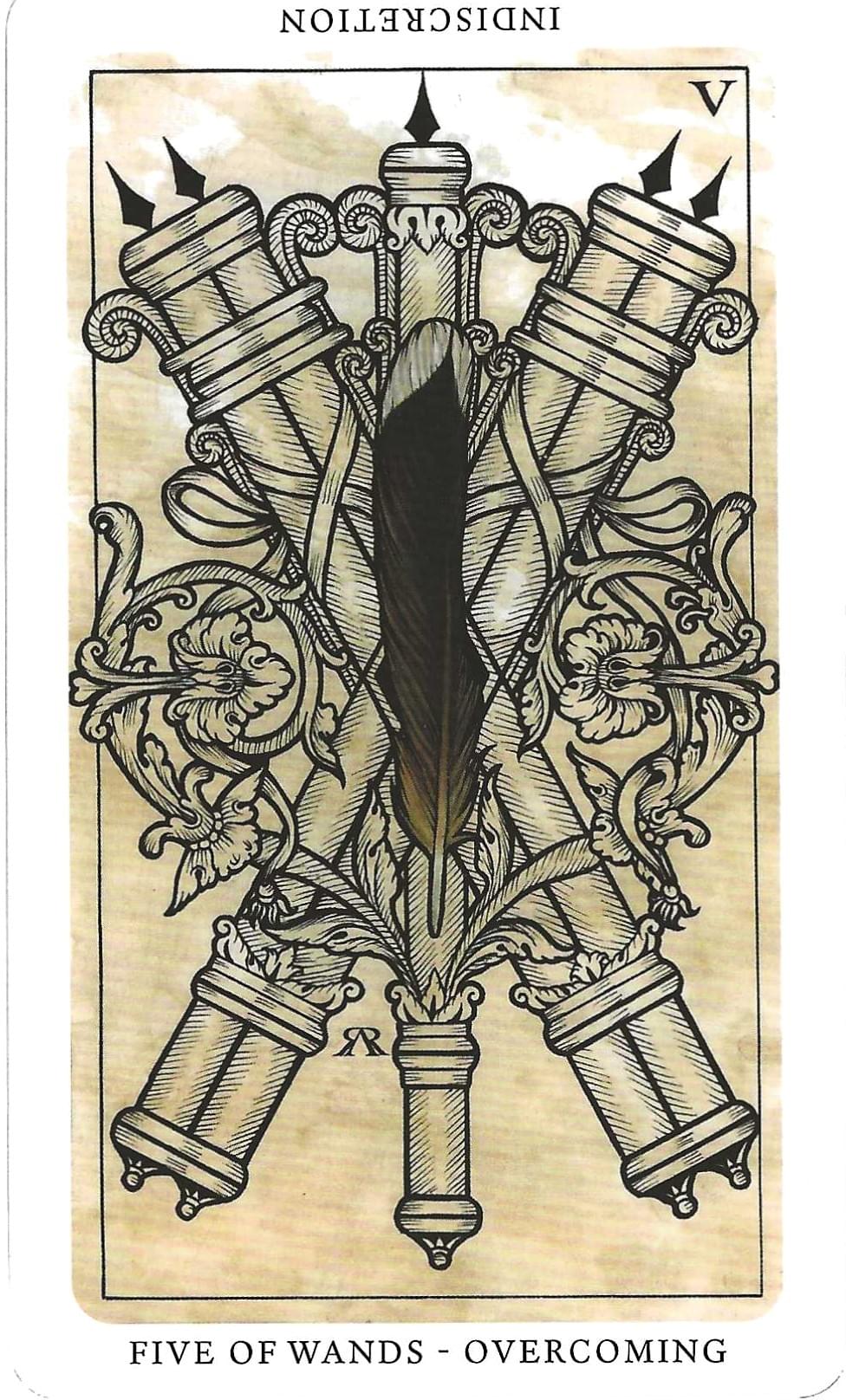
The Medieval Feathers Tarot-5 of Wands

Tree of Life

The Thoth 5 of Wands – Strife
Qabalistic Framework
The Fives in the Thoth system are attributed to Geburah, the Fifth Sephira on the Tree of Life. Geburah is Severity, the sphere of Mars. It is the raw force of correction, disruption, and conflict that breaks stagnation. When applied to Wands—the fiery suit of Will and Spirit—the result is an eruption of discordant energies, a battlefield of egos and wills.
Thus, Strife is not mere bickering—it is the clash of elemental Fire magnified through Mars. This is not the harmonious flame of Netzach, but rather the uncontrolled combustion of energies colliding, demanding mastery and focus.
Astrological Decan
The 5 of Wands corresponds to the first decan of Leo (0°–10°), ruled by Saturn in Leo. Here, the natural Solar royalty of Leo (creative self-expression, radiance, kingship) is weighted by Saturn’s restricting and testing influence. The result is tension: the Solar flame straining against Saturnine boundaries.
The two Angels of the Decan are Vahaviah and Yelayel.
Vahaviah teaches survival under adversity, courage in strife.
Yelayel relates to fame and reputation, showing how conflict brings recognition or tests of honor.
Together, they illustrate the spiritual truth of the card: struggle is the crucible in which true character and will are tempered.
Artistic Symbolism
Lady Frieda Harris, with her subtle grasp of esoteric currents, presents the scene in tones of red, gold, and volcanic yellow—a furnace of psychic fire. The wands clash chaotically, radiating the energy of tantric struggle.
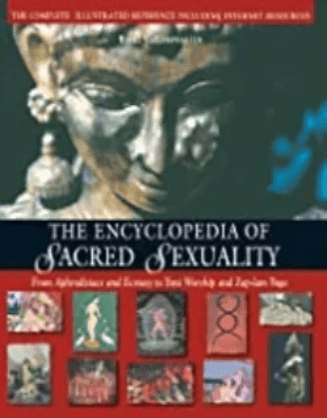
The central wand is the lotus wand of Spirit, while the others suggest the Vajra or trident of Tantric ritual. Their struggle recalls the Chakra Puja or Panchamakara (Five M’s) of left-hand Tantra—rites of polarity and fusion where opposites must collide before union occurs. Harris’ knowledge of the Choli Marg and Tantric puja is encoded in the composition: here strife is sacred, a dance of forces that unlocks new levels of willpower.
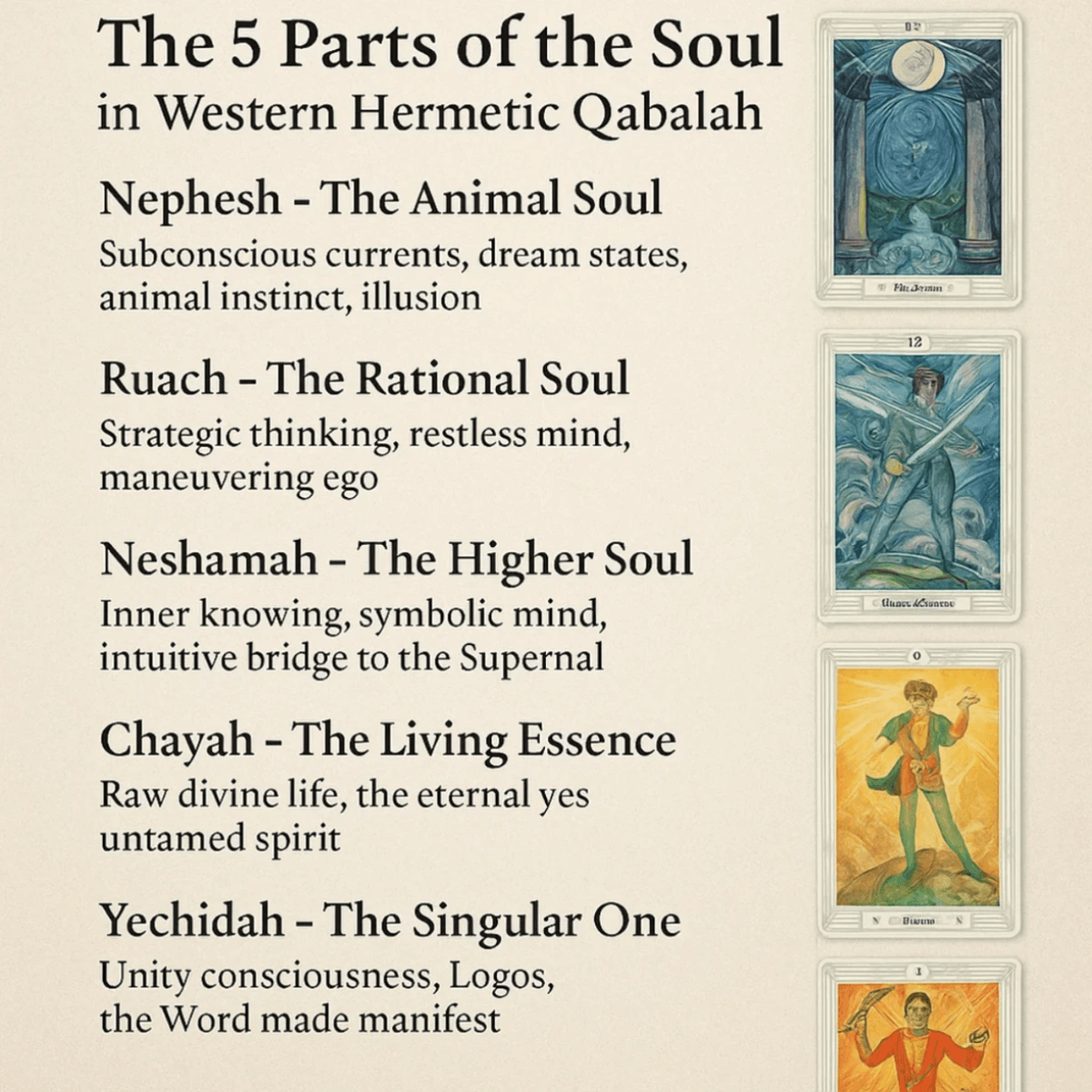
Hermetic and Tantric Insight
To the Western Hermeticist, Strife is a stage in the alchemical operation: the Solve before the Coagula. The aspirant’s Will meets resistance, not to defeat it, but to refine it.
In Tantric currents, Strife represents the friction of Shakti and Shiva, the red flame and the white flame. Without this sacred clash, there is no ecstasy, no expansion of consciousness. It is the “war in heaven” reenacted within the aspirant’s own Nephesh and Ruach, forcing integration with the Yechidah.
Divinatory Meaning
Upright: Conflict, competition, testing of strength, struggle for mastery, necessary friction that awakens dormant powers. Discipline through fire.
Inverted: Wasteful fighting, ego-battles, meaningless disputes, inner conflict without resolution.
✨ Hermetic Key: Strife is not a punishment, but the ordeal that tempers the Wand of Will into a true magical weapon.

The Eye of Ra and the Serpents of Power
At the center of the clash of wands blazes the Eye of Ra, flanked by upraised wings and crowned by twin serpents. While many mistake this for the lunar Eye of Horus, in this context it is explicitly solar—the Eye of Ra, emblem of divine authority and fiery retribution.
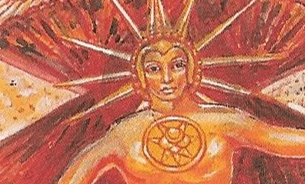
This symbol also appears on the breastplate of the Prince of Wands, further tying the card to the Solar Will struggling to assert itself against Saturnian restriction. The Prince is the charioteer of Will-in-action, and here the Eye reappears, but under strife, the Will is tested in fire.
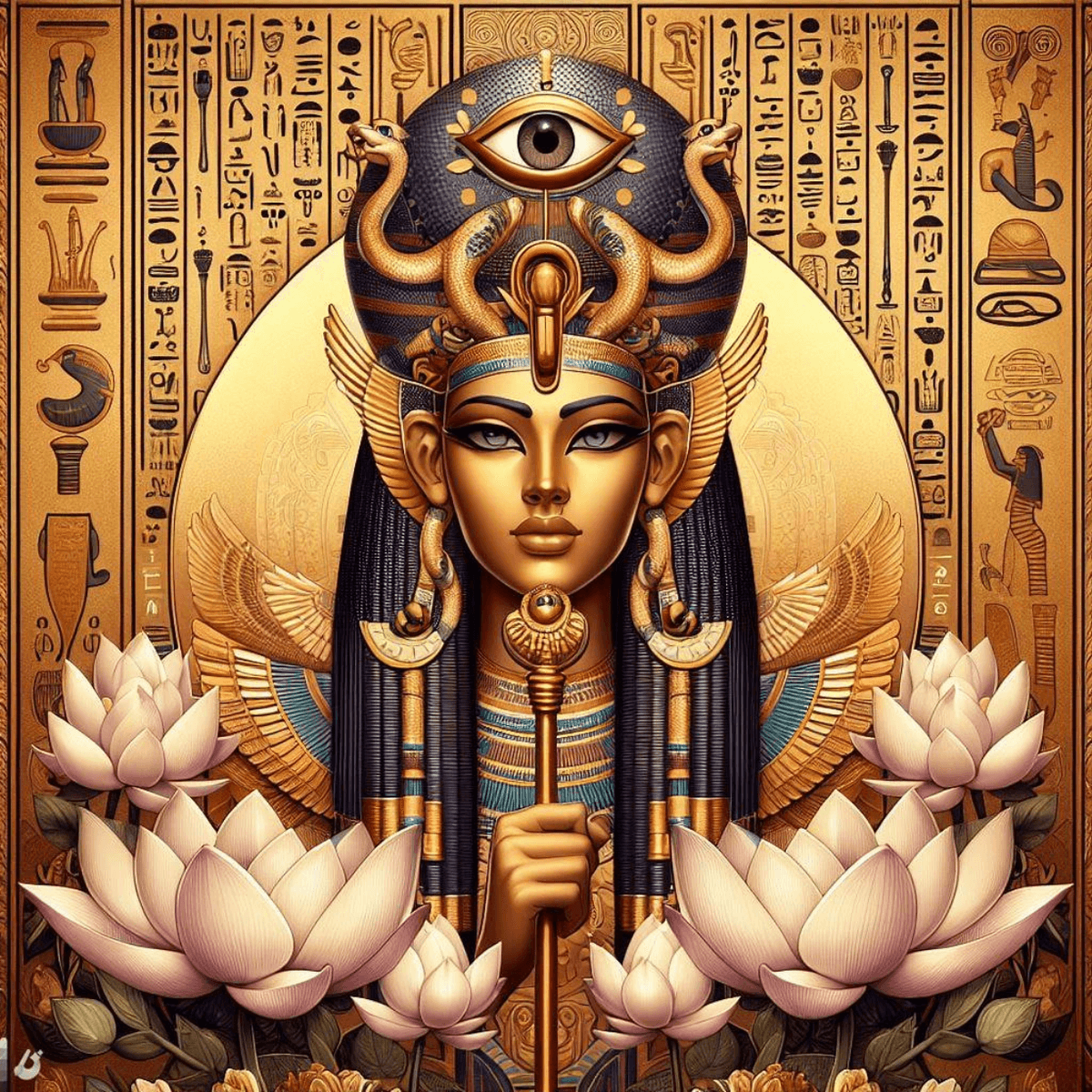
The Uraeus Serpents
The twin serpents are the Uraei of Egyptian iconography, worn upon the crowns of pharaohs as signs of divine sovereignty. They are not passive: they are living flames of the Goddess, guardians who spit fire at enemies of Ra. Their presence in the 5 of Wands indicates that strife awakens Kundalini currents—the serpents of Fire rise in opposition and must be mastered.
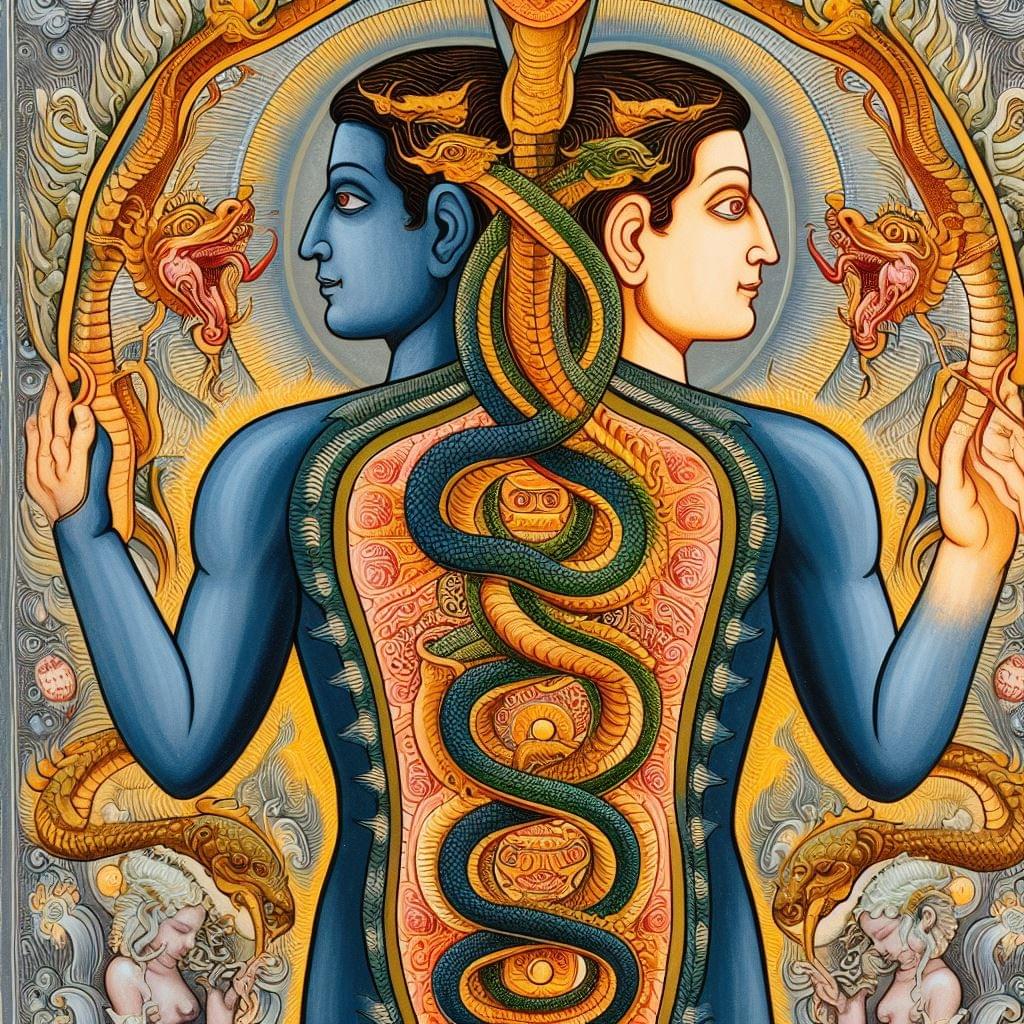
In tantric terms, this parallels the Ida and Pingala channels of the subtle body: two serpent streams rising up the Sushumna, meeting at the Ajna (the Eye). But here, they do not yet harmonize; they clash, twist, and spark, producing the turbulence that is Strife.
Symbolic Integration
Thus, the imagery is layered:
Eye of Ra: The Solar Self that sees all, but under Saturn’s trial it burns rather than illuminates.
Uraei: Kundalini forces awakened through conflict, guardians of spiritual authority.
Wings: Suggest the aspiration toward Tiphareth, the Solar Sephira, even as Geburah tests and tempers it.
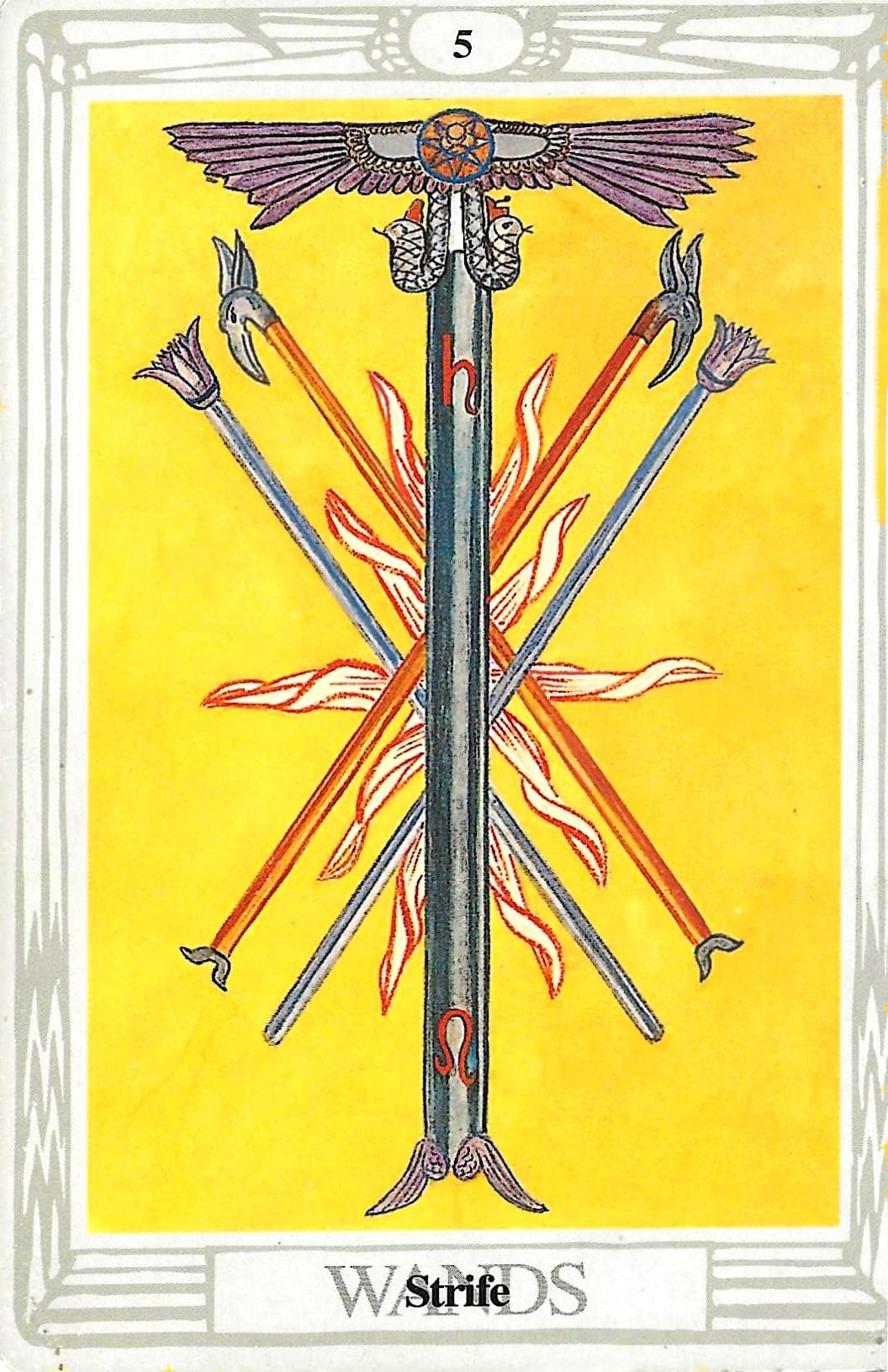
Lady Harris, drawing on both Hermetic and Tantric traditions, paints the card as a sacred furnace: the Solar Will, beset by opposition, forced to sharpen its sight and awaken its serpents.
Esoteric Lesson
The aspirant learns that conflict is a form of initiation. The Eye sees more clearly when it has wept in fire. The serpents do not sleep forever—they must be roused by strife before they can be crowned on the brow of the Magus.
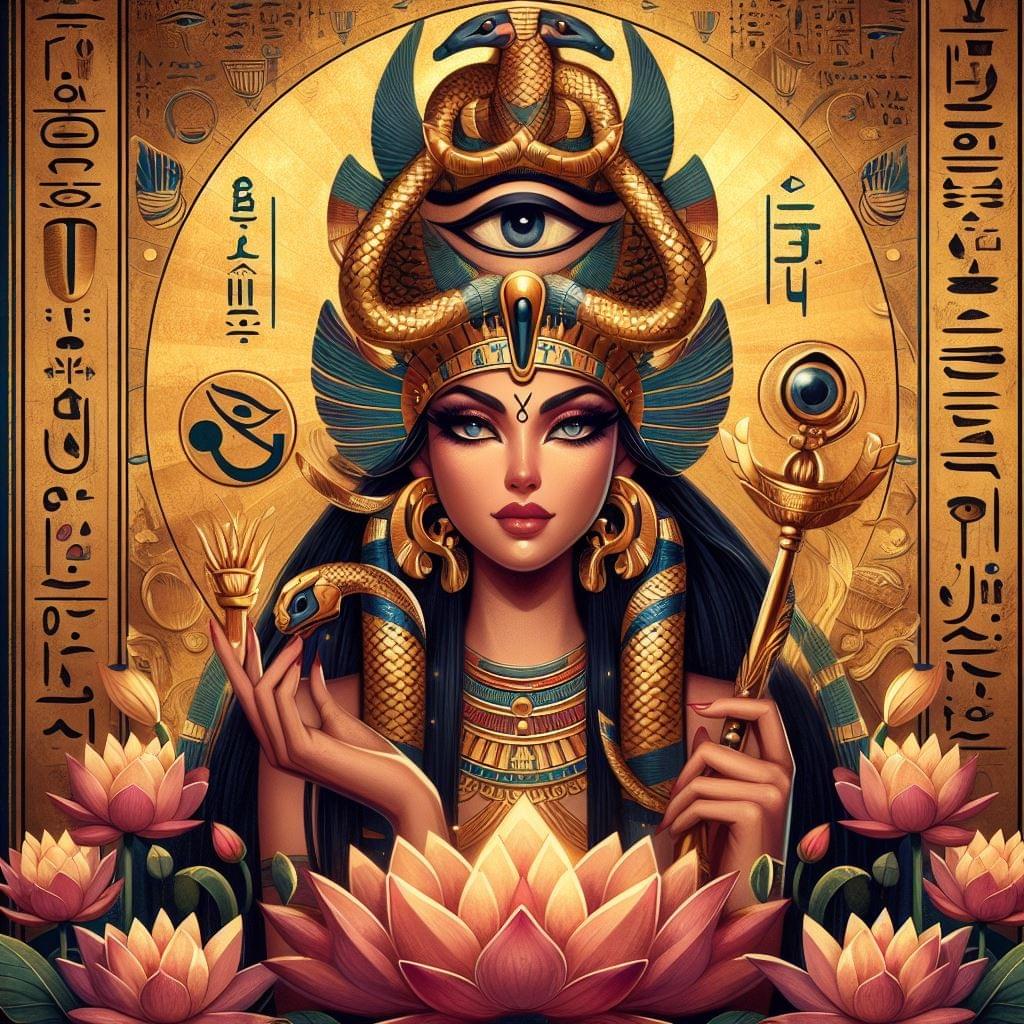
The Uraeus serpents, often depicted in Egyptian mythology, are stylized representations of the rearing cobra. Here are some key points about the Uraeus:
Symbol of Sovereignty and Divine Authority: The Uraeus is most commonly associated with royalty and deities, symbolizing sovereignty, divine authority, and protection. It is frequently seen on the crowns of pharaohs and gods.
Connection to the Goddess Wadjet: The Uraeus is linked to the goddess Wadjet, one of the earliest Egyptian deities, who was depicted as a cobra. Wadjet was a protector of Lower Egypt and later became a symbol of the unified Egypt.
Protection and Power: The Uraeus was believed to provide protection by spitting fire at the enemies of the pharaoh or deity it adorned. It signified the protective power of the sun god Ra and other deities.

Duality with the Vulture Nekhbet: Often, the Uraeus was paired with the vulture goddess Nekhbet, who represented Upper Egypt. Together, they symbolized the unity and protection of both Upper and Lower Egypt. The upper and lower Egyptian crowns are on the heads of the twin serpents.


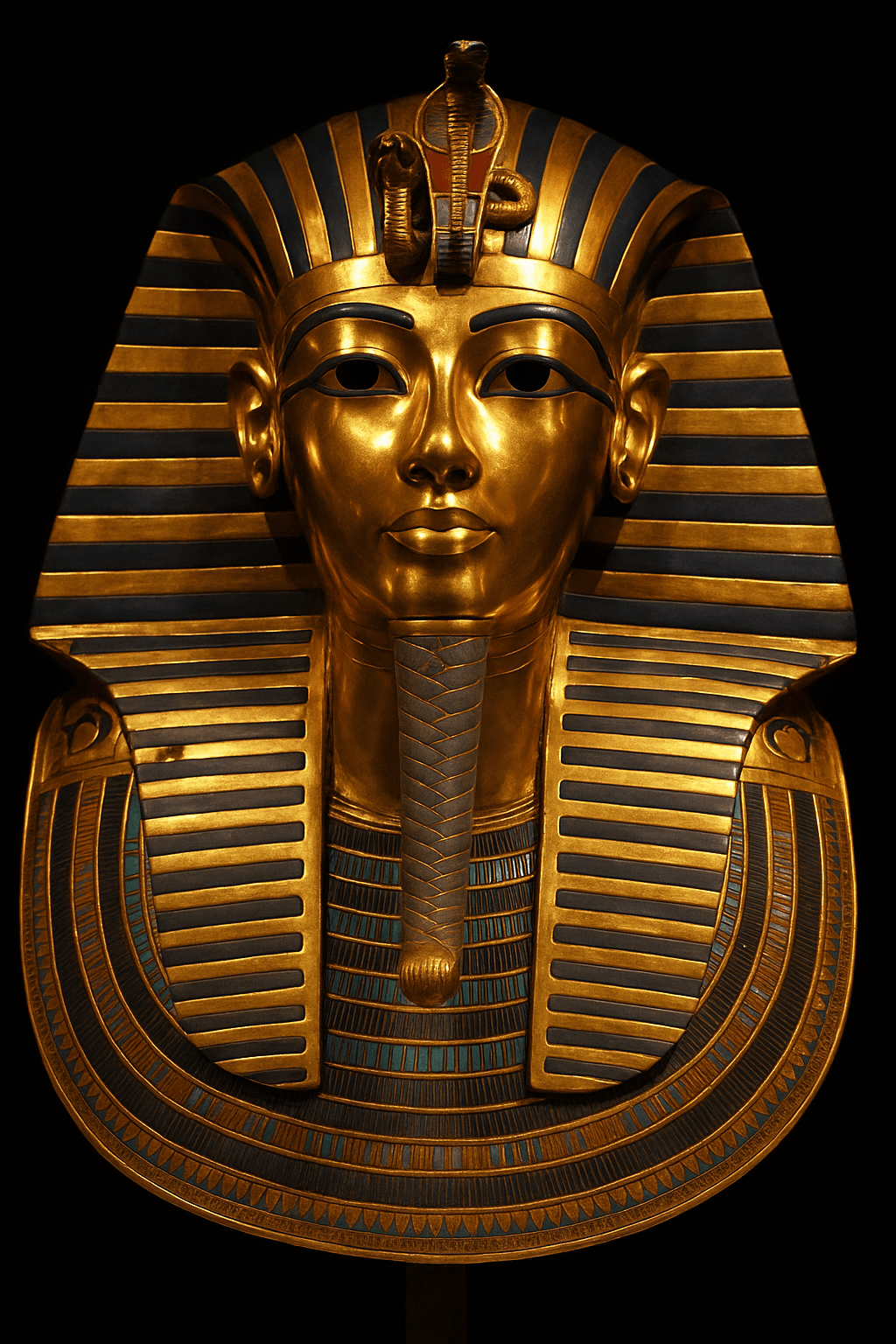
Depiction and Placement: The Uraeus is typically depicted as a rearing cobra with its hood flared, often emerging from the forehead of a deity or pharaoh. It can be seen on various artifacts, including statues, crowns, and temple carvings.
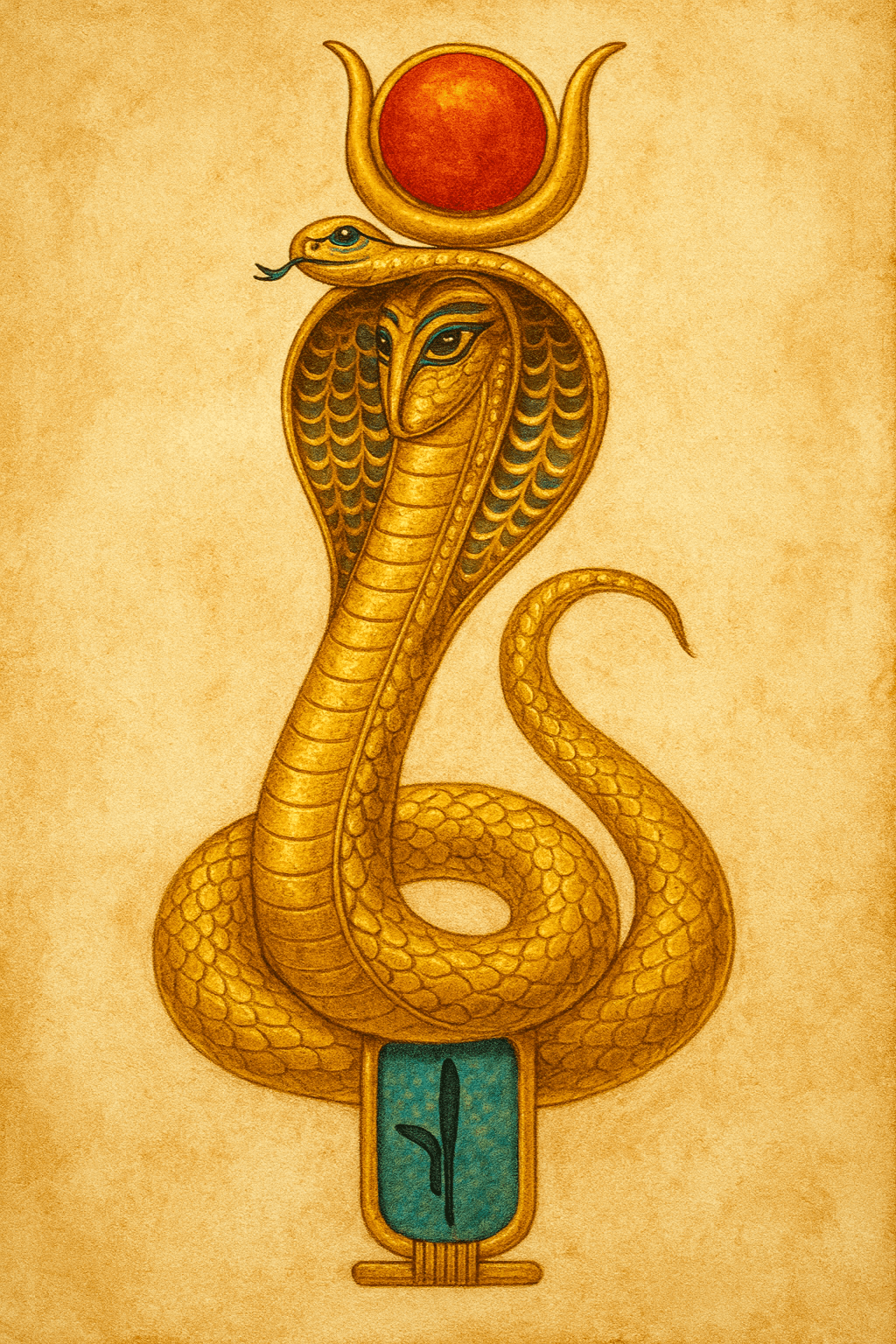
Wadjet
Spiritual and Mystical Significance: Beyond its physical representation, the Uraeus holds mystical and spiritual significance, symbolizing the kundalini energy, which is often depicted as a serpent coiled at the base of the spine in spiritual traditions.
In summary, the Uraeus serpents in Egyptian mythology are powerful symbols of protection, divine authority, and royal sovereignty, deeply connected to the goddess Wadjet and the spiritual and political unity of ancient Egypt.


As stated, the circular symbol on the chest of the Prince of Wands and the Major Adept 5 of Wands card in the Thoth Tarot deck is the Winged Solar Disk. This symbol, deeply rooted in ancient Egyptian iconography, represents Ra, the sun god, and is associated with power, protection, and divine authority.
Here are some key aspects of the Winged Solar Disk:
Solar Energy and Vitality: The disk symbolizes the sun, representing energy, vitality, and life force. In the context of the Prince of Wands, it underscores his dynamic and fiery nature, full of creative energy and drive.
Divine Protection: The wings signify divine protection and the ability to transcend earthly limitations. For the Prince of Wands, this suggests his potential to rise above challenges and his connection to higher spiritual forces.
Authority and Leadership: As a symbol of Ra, the solar disk conveys authority and leadership. The Prince of Wands embodies these qualities, often seen as a charismatic leader and a person of influence and power.
Transformation and Renewal: The sun is also a symbol of transformation and renewal, highlighting the Prince of Wands' ability to inspire change and bring new beginnings through his actions and ideas.
In summary, the Winged Solar Disk on the chest of the Prince of Wands and on the Major Adept Wand of the 5 of Wands emphasizes his dynamic, powerful, and transformative nature, highlighting his role as a leader and a force of change.

The Wands of the Adepts in the Thoth 5 of Wands – Strife
The Three Adept Wands
Lady Frieda Harris, guided by Crowley’s Hermetic direction, encodes in this card not just abstract “sticks,” but the magical weapons of Adepts from the Golden Dawn tradition:
The Lotus Wand (Adeptus Minor, Tiphareth)
A white wand surmounted by the Lotus blossom, symbol of the harmonizing force of Water, receptivity, and devotion.
In the 5 of Wands, its presence reminds us that even the serenity of Tiphareth (Solar Beauty) must contend with conflict when filtered through Geburah.
The Lotus Wand represents the maternal waters, the sustaining compassion that will eventually soothe strife.
The Phoenix Wand (Adeptus Adeptus)
Crowned with the fiery bird of resurrection, the Phoenix Wand represents transformation through fire.
Its appearance in this card highlights the purgative quality of strife: fire must consume the dross, and through destruction comes rebirth.
The Phoenix Wand implies that the adept’s trial by fire is not annihilation but renewal.
The Central Wand – Major Adept (Gray/Lead of Saturn)
At the heart of the card lies the wand of the Major Adept. It is gray, symbolizing lead, the metal of Saturn.
Its central placement shows that the severity here is directed by Geburah, not random misfortune. The Adept must confront Saturnian restriction, weight, and severity as part of the path to mastery.
This grayness reminds us of the alchemical truth: lead must be transmuted into gold. Until then, the wand is heavy, a burden of Saturn, pressing the aspirant into necessary struggle.
Qabalistic Implication
The placement of these wands within the card is no accident. The central Saturnine wand channels the harsh force of Geburah into the battlefield of Fire. Around it, the Phoenix (Fire) and Lotus (Water) cross, representing elemental polarities in friction, producing the turbulence of Strife.
Thus, the 5 of Wands encodes a profound lesson: the Adept’s path cannot bypass conflict. Geburah demands severity, not as cruelty, but as a refining fire. Only by enduring this directed struggle does the aspirant prove themselves worthy of Tiphareth’s harmony.

Saturn, Cronos, and the Wand of Lead
Saturn, in its Greek form Cronos, is the devourer of time, the inexorable weight of mortality and limitation. His metal is lead, heavy and inert, binding all form to duration and decay. When the Adept faces the Saturnian Wand at the heart of the 5 of Wands, they are not merely confronting “strife,” but the very conditions of incarnation: time, space, restriction, mortality.
To seize the gray wand, then, is to grasp Time itself — to endure its weight until one no longer suffers under it, but rather uses it as a staff of command.
Strife as the Master’s Journey
Thus, the Thoth 5 of Wands is not only about external conflict or inner discord, but the ordeal of the Adept whose Will must be tested against Time and mortality itself. This is why the wand of the Major Adept is central:
It shows that strife is not chaos, but a directed trial, arranged by Geburah.
It implies that the Adept is being tempered into one who can wield the Saturnian key — the mastery of cycles, time, limitation, and cause-effect in the phenomenal world.
Once mastered, the gray wand ceases to be lead: it becomes the hidden Philosopher’s Stone, transmuted into gold, where Time is no longer a prison but a dimension of mastery.
Hermetic Implication
Indeed — this makes the 5 of Wands a “Master’s Journey” card.
The Lotus Wand (Water) and Phoenix Wand (Fire) are elemental initiations.
The Saturnian Wand (Lead/Time) is supra-elemental: it is the wand of the Master Adept, who has confronted Time and emerged timeless.
In this sense, the Adept is being taught that all strife in time is preparation for timelessness. The 5 of Wands is therefore a rite of passage: one must struggle with temporal forces to awaken the eternal Solar Self.
✨ Hermetic Key: To hold the gray Wand of Saturn is to take up the burden of Time, until through strife it becomes the Rod of Eternity.

The Tantric Implication of the 5 of Wands
Sexual Fire as Spirit
In both Tantric and Taoist traditions, the sexual force is never “merely physical.” It is the same vital fire that builds stars, worlds, and souls. Crowley himself, in Liber Aleph and Liber AL, calls this the “Adorable Fire.”
In the 5 of Wands, this fire is seen as strife because it has not yet found harmony. The wands clash like uncontrolled kundalini currents. Yet beneath this chaos is the secret: strife is the friction that awakens the fire.

Daka and Dakin In tantric union, the Daka (male adept) and Dakini (female adept) consciously circulate the sexual current, raising it through each chakra.
At first, the body resists — strife erupts in nerves, muscles, and subtle channels (nadis).
This is Geburah’s severity acting through the body, forcing it to adapt to higher vibrations.
But as balance is achieved, every chakra is enlivened, spinning to its divine frequency.
Thus, the strife is temporary resistance on the way to permanent harmony. The wands cross and clash only to generate a greater, unifying force.
Taoist Parallel
Taoist alchemy describes this as refining jing (essence) into qi (energy), and qi into shen (spirit). The sexual act becomes a crucible of elements, where Yin and Yang first conflict, then merge into a third power, the Golden Elixir.
This parallels the 5 of Wands’ alchemical lesson: Saturn’s severity makes the fiery exchange a discipline rather than mere indulgence. The Adept must master the strife of the body before transmuting it into timeless vitality.
Hermetic Synthesis
So, in the Thoth 5 of Wands, Lady Harris encodes not only conflict, but the ordeal of harmonizing life-force itself:
The Lotus Wand (Mother-Water) represents receptivity in sexual union.
The Phoenix Wand (Fire) represents resurrection through orgasmic flame.
The Saturn Wand (Lead/Time) represents the body’s resistance, the discipline needed to master the sexual fire.
When all three are balanced, the “strife” resolves into a higher equilibrium of spirit and body — the Adept becomes rejuvenated, renewed, and radiant.
✨ Tantric Key: Strife is the body’s cry against transformation. Endure it, and the Adorable Fire awakens, raising every chakra to its divine rhythm.

Strife filled Ecstasy.
The Thoth 5 of Wands – Strife as Ecstasy
The Clash of Elements
In this card, Primal Fire (masculine, electric) and Primal Water (feminine, magnetic) are not resting in harmony. They are invoked violently, colliding in the field of Geburah’s severity. This clash is not a quiet union, but a surge of power — an electromagnetic storm that shakes the very foundations of body, mind, and soul.
Fire (Electric): The eruptive, upward-driving will.
Water (Magnetic): The receptive, downward-pulling desire.
When they meet, they generate Cosmic Steam (Plasma) — the very medium of stars, souls, and vitality.
This is why Harris paints the scene in volcanic yellows and reds: it is the primordial cauldron boiling over.

The Adorable Fire
This surging electromagnetic fusion is what Tantra calls the Adorable Fire: the vital flame of Spirit-Sexuality. It is not mere passion, nor only mystical light, but the indivisible union of both.
At first, the body resists, manifesting as strife — shaking loose ingrained patterns, habitual emotional reactions, and psychic blockages.
The Adept experiences imbalance, turbulence, even exhaustion, as the old structures crack under the new current.
Yet once balance is restored, the Adept feels bliss, renewal, and an uplift into a higher vibratory state.
Thus, the 5 of Wands teaches that Strife is the prelude to Ecstasy. Without friction, the fire does not awaken.
Strife-Filled Ecstasy
In Tantric, Gnostic, and High Magical traditions, this union is sometimes called Strife-filled Ecstasy. The paradox is clear:
The strife is the friction of opposites.
The ecstasy is the bliss of their union.
Together, they generate the Adorable Fire, which renews the soul and body at every level.
This is why the Adept wands cross here: the Lotus Wand (Mother-Water) and the Phoenix Wand (Resurrection Fire) are locked in polarity, with the Saturn Wand (Lead/Time) channeling the intensity. Out of the trial comes triumph.
The Master’s Lesson
The 5 of Wands is, therefore, a card of initiation. It says: Do not fear the strife that comes when opposites collide. It is only through this ordeal that the Adept awakens the Adorable Fire, learns the mastery of time and body, and ascends into a more radiant form of being.
✨ Hermetic–Tantric Key: The Adorable Fire is always born in strife. The clash of the electric and magnetic, Fire and Water, Shiva and Shakti, burns away resistance until the Adept stands renewed, aflame with bliss and timeless power.

*
In Tantric practice, a "Daka" and a "Dakini" are important concepts.
Daka: A Daka refers to a male practitioner in Tantric traditions. Dakas (Hero) are often seen as embodiments of masculine energy and are considered adept in various Tantric rituals and practices. They play a crucial role in Tantric ceremonies, often working in partnership with Dakinis to facilitate spiritual growth and transformation.
Dakini: A Dakini (Sky dancer), on the other hand, is a female practitioner in Tantric traditions. Dakinis are often regarded as embodiments of feminine energy and are associated with wisdom, compassion, and enlightenment. They are guides and sources of inspiration for Tantric practitioners, helping them on their spiritual journey.
Dakas and Dakinis often work together in Tantric rituals and practices to explore and harness the union of masculine and feminine energies, aiming for spiritual awakening and realization. Their roles can vary depending on the specific Tantric tradition and practice being followed.
It is to be noted, that when energy levels surge beyond common boundaries, there is strife as new dimensions of self are experienced.


Master of time-Space
However, any surge of energy causes a noticeable, often severe, imbalance in the neophyte and to the Elements; therefore, the 5's can bring serious problems of unbalance:
- The 5 of Wands-Strife, brings quarrel and strife in the Vital energy:
- The 5 of Cups brings disappointment to relationships.
- The 5 of Swords brings defeat to health and mind.
- The 5 of Disks, brings strangulation to income and business.
Hence all 5's seem gloomy; However, the other cards in the divination will show you how long the difficulty as well as, how serious the 5's are to be taken. Really, these nasty old 5's just announce that a difficulty exists and often the solution to the problem is at hand and is often shown in the other cards of the Tarot reading.


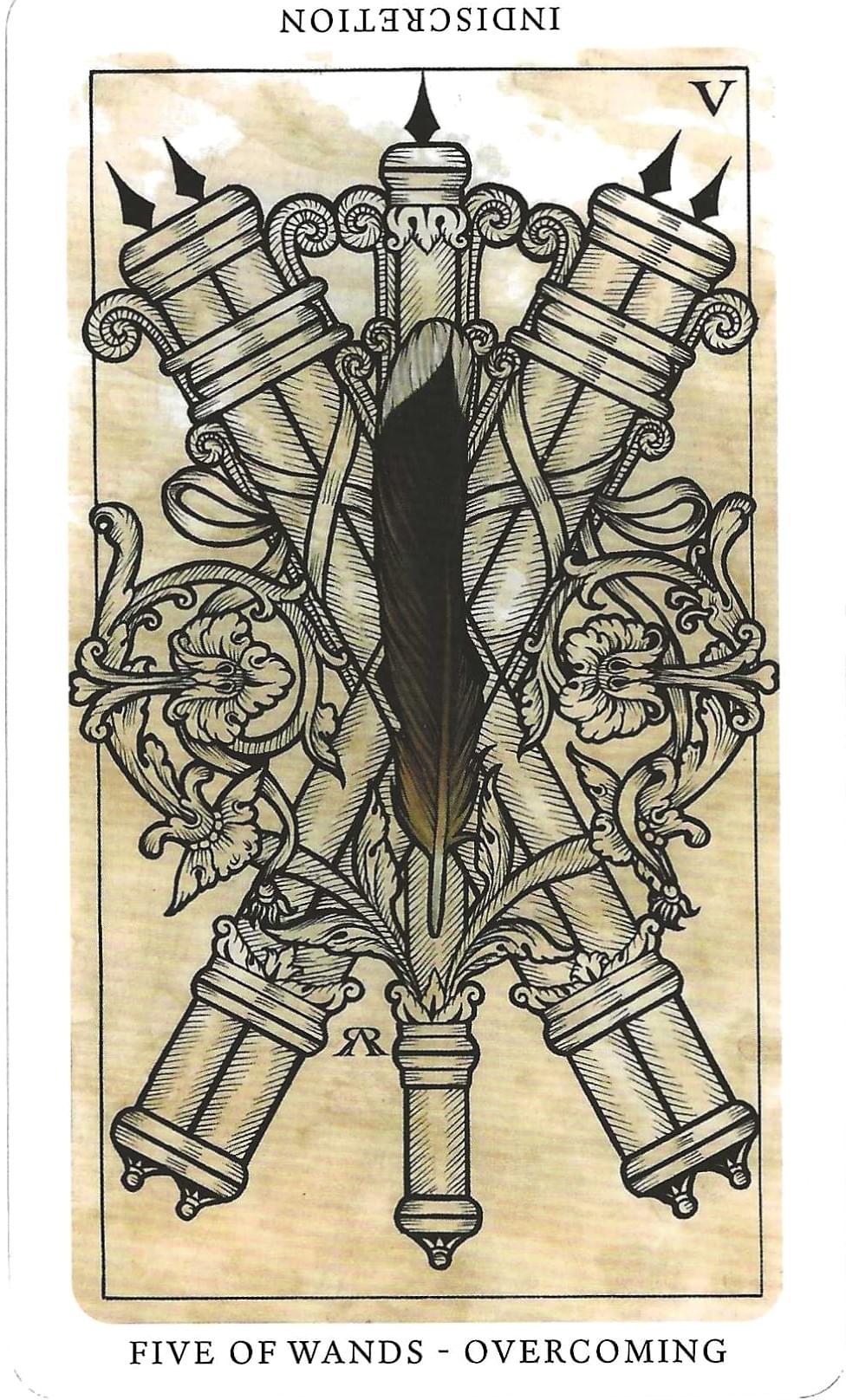
Medieval Feathers Tarot – 5 of Wands – Overcoming
Upright / Light Meaning
In this deck, the Five of Wands speaks less of strife and more of overcoming. Where the Four of Wands showed stasis and hindrance, here the addition of a fifth wand breaks through that standstill. The four wands regain their purpose with the aid of the new force, symbolizing renewed capacity, movement, and strength.
The presence of the Purple Sunbird’s feather upon the fifth wand marks it as more powerful, vibrant, and transcendent. The Sunbird, a creature of radiant energy, embodies the quickening of will and vitality. Its feather signifies that this wand is not only stronger than the four before, but it exceeds them in potential, granting the ability to move beyond obstacles that once seemed insurmountable.
Thus, the card signifies:
The ability to overcome impediments and barriers.
Rejuvenation of energy after setbacks.
A sharpening of focus, where priorities can now be pursued before they slip away.
A lesson in adaptability: knowing how to work around obstacles if they appear again.
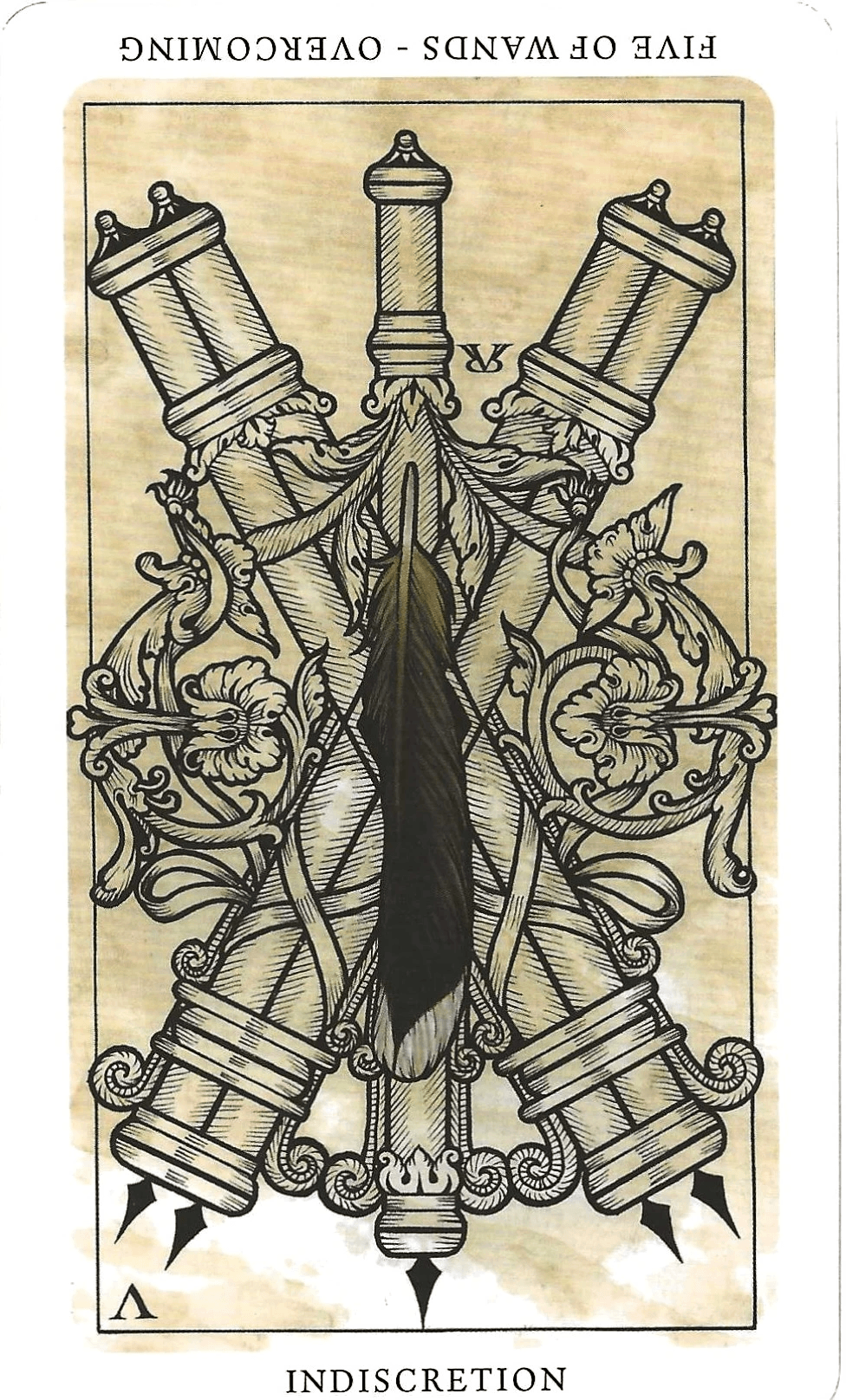
Reversed / Shadow Meaning
When inverted, the 5 of Wands warns of careless words and misplaced opinions. You may be speaking without awareness, imposing views in places they are unwelcome, or crossing boundaries in ways that invite backlash.
Here, the advice is clear:
Practice restraint. Not every opinion needs to be voiced.
Discern the right time and place for your input.
Misjudged expression may escalate into strife that could have been avoided.
Hermetic Undercurrent
Where the Thoth Tarot shows Strife as necessary friction, the Medieval Feathers Tarot shows Overcoming as the reward of persistence. In Hermetic terms, this echoes the principle of Solve et Coagula: the breaking down of form (hindrance in the 4) gives rise to a higher synthesis (the 5th wand crowned by the Sunbird’s feather).
The lesson is simple but profound: hindrance births innovation. The obstacle is the key to its own overcoming.
✨ Key Thought: The 5 of Wands teaches that obstructions are not permanent; they are catalysts for the emergence of new strength and ingenuity.

In astrology, the placement of Saturn in the house of Leo can influence various aspects of an individual's life. Saturn is associated with discipline, responsibility, and challenges, while Leo is linked to creativity, self-expression, and leadership. When Saturn is in Leo, some key characteristics may manifest:
Self-expression Challenges: Saturn in Leo may bring challenges in expressing oneself freely. Individuals with this placement might feel a sense of restriction or self-consciousness when it comes to showcasing their creativity or talents.
Authority and Leadership Lessons: Leo is a sign associated with leadership, and Saturn's presence can bring lessons in responsible and structured leadership. Individuals may learn the importance of discipline and organization in their leadership roles.
Creative Discipline: While Leo is known for creativity, Saturn encourages a disciplined and structured approach to creativity. People with this placement may find that their creative pursuits require hard work, dedication, and a patient approach to achieve lasting success.
Recognition through Diligence: Saturn's influence suggests that recognition and success in Leo-related areas, such as the arts or entertainment, may come through persistent effort and dedication over time.
Balancing Individuality and Responsibility: Individuals with Saturn in Leo may need to balance their desire for personal recognition and individuality with the responsibilities and commitments they have in their lives. Finding this balance can lead to a more harmonious and fulfilling life.
It's important to note that the overall astrological profile, including the positions of other planets, aspects, and the individual's birth chart as a whole, contributes to the complete picture. Astrology is a complex system, and interpretations can vary based on the specific details of an individual's birth chart.

Strife ridden flow.

The 5 of Wands – Strife, Fear, and the Fasces of Will
The Companions of Fear and Doubt
In the 5 of Wands, fear and doubt appear as companions on the path. Yet the Adept learns not to banish them outright, but to let them walk beside. As they journey, these shadow-companions absorb the wisdom of experience and gradually lose their power to delay or dominate. This card therefore teaches the alchemy of fear: what once hindered becomes an ally once integrated.
Conflict of the Unity Within
The Spirit–Mind–Body triad, which ideally operates in harmony, is here seen in discord. Strife is not only external but deeply internal: survival instincts, mental conditioning, and spiritual aspiration pulling in different directions. The card asks the aspirant to recognize this state of division and to seek reconciliation, even if through struggle.
In truth, this strife is always stirred by those influences — internal and external — that would divide Oneness. The Adept, through conscious will, refuses to be split, choosing unity over indoctrination and control.
Aggression and the Struggle for Control
The art of the Thoth card shows many wands clashing, each as if attempting to impose its dominance upon the others. This is the very image of aggression as false mastery: every ego clamoring to control the situation, yet none attaining peace.
The lesson is clear: when each individual will seeks to overpower another, strife is inevitable. Yet in the chaos lies an opportunity — to discover the difference between selfish assertion and true will. True Will, unlike aggression, does not need to conquer; it simply is.
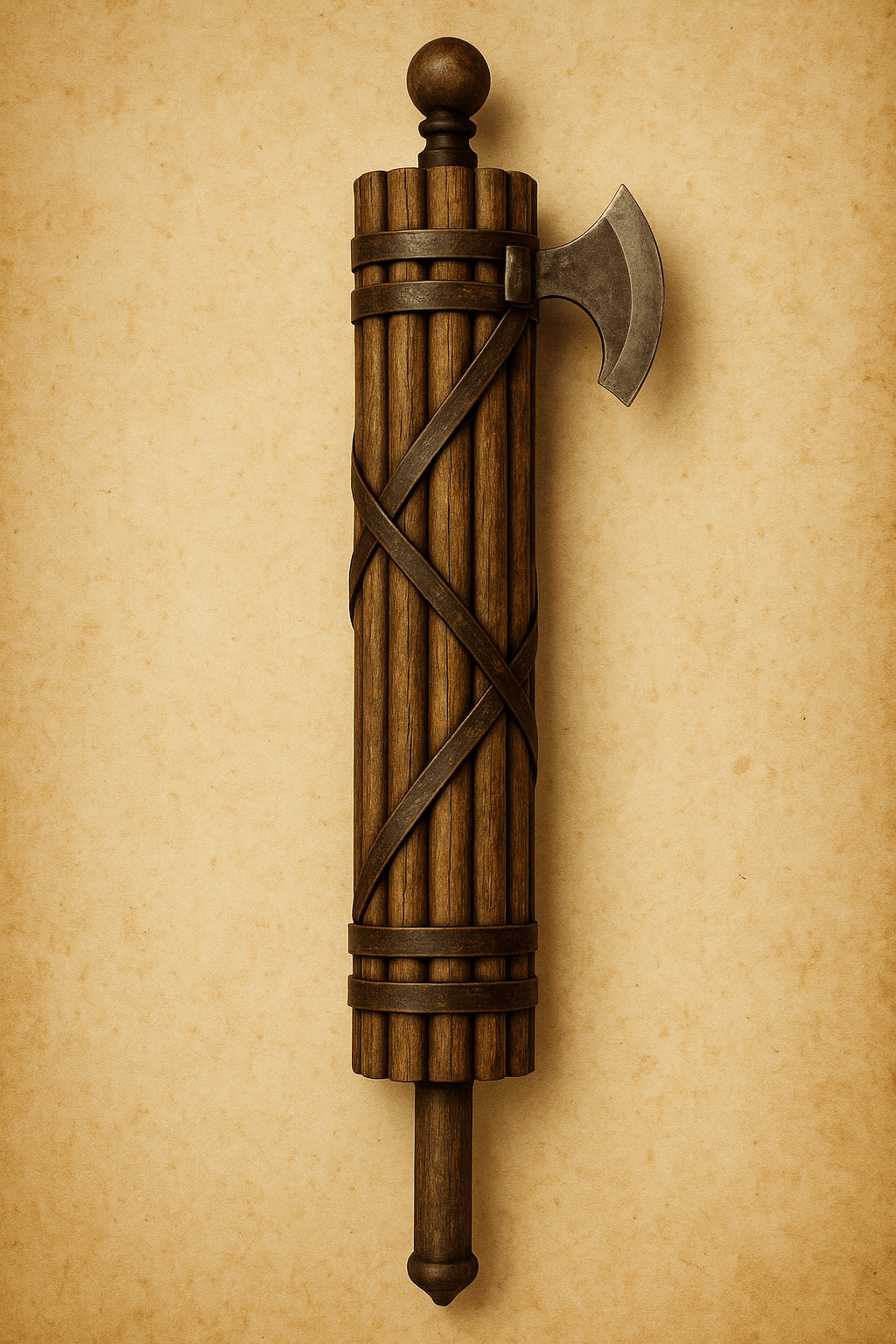
The Fasces Symbolism
At the center of the card is a wand resembling a fasces — the ancient Roman symbol of authority, composed of many rods bound together around a central axe. In the context of this card, the fasces becomes a mirror of our own inner state:
Unity of purpose grants true strength.
Division and indoctrination leave one vulnerable, strife-ridden, and easily manipulated.
Thus, the fasces in this card represents the Adept’s choice: to unite fears, doubts, and wills into one bundle of strength, or to allow strife to splinter the inner being into fragments controlled by external forces.

Thoth 5 of Wands-Strife
Hermetic Insight
The 5 of Wands is not only a picture of strife, but also a teaching on mastery. Strife reveals the battle between individuated wills and the One Will. The aspirant is tested: will they collapse under division, or integrate their fears, doubts, and conflicts into a single wand of power?
✨ Key Thought: Fear and doubt are not banished by denial, but by being carried through the fire of experience until they lose their power. True Will is forged in the furnace of strife, bound together like the fasces, indivisible.

The Caveat of the Fives
The Energy of the Number Five
The number 5 in Qabalah corresponds to Geburah, Severity, and Mars. It is the archetype of force applied to break stasis — the crack that allows new motion, the fire that purifies. Without the 5, nothing would evolve; without strife, there is no mastery.
Yet, this same fire carries a warning: when the desire for change and variation dominates without wisdom, the soul may fall into perpetual unrest, mistaking turbulence for progress.
The Pitfall of Endless Variation
The 5 demands growth through conflict. But when the aspirant becomes addicted to strife, they lose the harmony that change was meant to serve. Instead of transformation, they spiral into self-destruction.
This is why the Fives often feel uneasy: they are the midpoint where stability (the 4) is disrupted, but true balance (the 6) has not yet been reached. If one cannot hold steady through this disruption, they may cling to conflict itself as a false source of vitality.
Historical Illustration: The Hitler Example
Adolf Hitler embodies this failure of the 5-force. His entire psyche was consumed by variation and change on his own terms — an insatiable will to remake the world according to a distorted vision. His inability to rest in harmony, his addiction to conflict and conquest, led not only to his own downfall but also catastrophic destruction for millions.
In Hermetic language, he became a slave of Geburah unbalanced, where Severity turned to cruelty, and Strife became self-devouring fire. He did not transmute the wand of lead into gold; he was consumed by it.
The Adept’s Lesson
The caveat of the Fives is this:
Change is necessary, but it must serve harmony, not ego.
Conflict is purgative, but it must lead to integration.
To crave strife for its own sake is to feed a fire that burns the Adept rather than refines them.
True mastery is seen in the Adept who endures strife without becoming addicted to it — who can walk through the fire, but also know when to return to peace.
✨ Hermetic Key: The energy of Five awakens transformation, but only balance with the Six (Tiphareth, Beauty) prevents it from collapsing into cruelty or self-destruction.
When the 5/Five of Wands is thrown during a divination It implies:
- That the querent is involved in a spiritual conflict.
- This frustrating conflict can ensue for 5 weeks or 5 months because of this confusion of ideas.
- The solution depends on the diligence of the querent.
- Here, the querent is adjusting the identity, struggling with self-doubt while striving to move forward.
- There may be a struggle or strenuous warfare- like competition for riches and success, a kind of battle in life, but without bitterness.
- The querent might also feel like they are in an impasse, powerless in a time of trial and difficulty.
- Proving one's own abilities (like in a sporting competition).
- Gain clarity around your intent.
If ill defined by the surrounding cards, it implies:
- Recklessness as in rash actions.
- Impulsiveness.
- Bitterness towards others.
Thank you for your interest, comments, and supportive donations. Your generosity blesses you and keeps the clutter of paying advertisers from our blog! May you live long and prosper.
Experience Tarot Readings with a Magus of the Thoth Tarot
Most people think Tarot is about fortune-telling, party tricks, or vague “mystical” predictions you’ve seen in Hollywood films. But the Tarot of Thoth—when read by a trained Magus—is something far more profound.
As a Western Hermetic Magus and Master of the Thoth Tarot, I offer one-on-one online readings that go beyond surface-level card meanings. Each session is a direct resonance between myself and the querent—spirit to spirit, mind to mind, body to body.
This is not about guessing your future. It is about awakening clarity, unveiling hidden forces, and aligning you with your own Solar Self. The Thoth Tarot is a Book of Universal Archetypes, encoded with Qabalistic, astrological, and alchemical wisdom. A reading with me brings these forces alive in your life in real time.
How My Readings Differ
Beyond the Mundane: I don’t just “interpret cards.” I read the dynamic flow of your Spirit–Mind–Body alignment through the Tarot’s Qabalistic architecture.
Direct Resonance: My one-on-one sessions are not mechanical. I attune to your presence and read both the seen and unseen currents shaping your life.
Hermetic Depth: As a Magus, I integrate the Tarot with the Tree of Life, planetary forces, and the Divine Archetypes that govern transformation. This opens insights that ordinary readings simply cannot access.
Empowerment, not Dependency: My goal is not to trap you in predictions, but to empower you with vision—so you can consciously co-create your path.
Why Choose a Magus Reading?
Because a true Magus does not read for you—he reads with you. Together, we explore your unique resonance with the living archetypes of the Tarot, peeling away the illusions of false ego and awakening your authentic Self.
✨ Book your private online reading today.
Special sliding-scale pricing is available so no seeker is turned away.
Discover the Tarot not as superstition, but as a sacred key to self-sovereignty, clarity, and transformation.
May you live long and prosper.
3 Western Hermetic Tarot and Magick websites helping people become more magic and less tragic since 2010
Home page, Tarot Store readings, Master Tarot classes page, Nontraditional Tarot Card Comparisons blog.
Traditional Tarot Card comparisons blog and tarot store.
Western hermetic magick ritual and invocation website and magick blogs.
